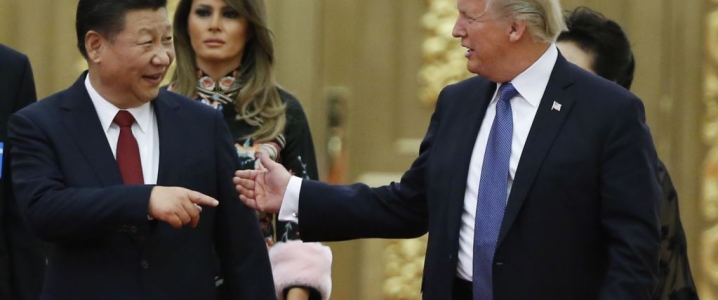On Saturday, there was a sign of hope that ongoing trade tensions between Washington and Beijing could be remedied. Beijing said that it agreed to significantly increase its purchases of American goods and services, including energy and agricultural commodities.
The disclosure came after the conclusion of intensive trade talks in Washington between the two sides. A joint statement said, “there was a consensus on taking effective measures to substantially reduce the United States’ trade deficit in goods with China.”
“To meet the growing consumption needs of the Chinese people and the need for high-quality economic development, China will significantly increase purchases of United States goods and services.”
However, the two sides did not indicate if they would either delay or drop trade tariffs threats, first initiated in March by President Trump, and followed up by China.
A dollar amount of increased Chinese procurement also wasn’t reached though Trump has recently called for a $200 billion target to close the massive $375 billion annual trade gap between the two countries.
The Beijing-based Global Times, a nationalistic newspaper which often expresses the views of the Chinese Communist Party (CCP), touted the talks as a major breakthrough. In an article titled “China, US reach win-win victory with trade war truce,” it said that “the U.S.-China trade deficit has continued to expand, despite China working to reduce this number for many years.”
The piece took issue with the official U.S. trade deficit amount, stating that it was $275.8 billion in 2017 instead of $375.2 billion as U.S. trade figures show. The article also noted that at first blush it looks like the Chinese concession seems to be a U.S. win; however, it said it was a “win-win” development. “The US will have the opportunity to reduce its trade deficit with China, while China will achieve the consistent purchase of US goods to benefit the development of the country and its people's life,” it added. Related: The Double-Edged Sword Of High Oil Prices
In this regard the Global Times piece is correct, at least as far as stating that China will purchase more U.S. goods to its own benefit. This is particularly true in regard to energy products from the U.S., both liquefied natural gas (LNG) imports and U.S. crude.
A senior U.S. official said that during discussions with a member of Chinese President Xi Jinping’s office, China was considering a package that relied on major purchases of U.S. –sourced LNG, including a contract for a U.S. firm to build LNG receiving and processing facilities in China.
Exorbitant gas demand
Not only does China need to offset the trade imbalance with the U.S., but it also needs American natural gas. China is increasing its gas usage per government mandate for the cleaner burning fuel to make up at least 10 percent of its energy mix by 2020 to offset record air pollution levels, with further earmarks by 2030.
In December, the Paris-based International Energy Agency (IEA) said that China's demand for natural gas will continue to soar toward 2040, outstripping domestic output by around 43 percent.
"China's annual gas production will more than double to 340 billion cubic meters (BCM) in 2040, with shale gas a major contributor, but consumption is foreseen to grow even faster, reaching 600 billion cubic meters," the agency said.
Since the U.S. will become the world’s third largest LNG exporter by the end of the decade when at least five major LNG export project are operational, it’s simply in China’s best interest to not only sign long-term off take agreements with U.S. LNG producers for both the security of supply that American gas offers but also the cost savings. Related: Fire Risk Slows Down Battery Boom
Most long and mid-term LNG contracts, especially in the Asia Pacific region, are based on an oil indexation formula, with costs such as transportation and liquefaction added. U.S. LNG for its part is based on Henry Hub gas prices and offers a savings over oil indexation. This is particularly true in a high oil price environment.
Though China will likely enter in numerous long-term supply contracts with U.S. LNG producers, this development as well as importing more agricultural commodities, will still not be enough to offset the trade imbalance.
For that to happen there needs to be fundamental and systemic changes in the trade of goods and services between the two countries. One remedy, which will likely not materialize in the near future, would be to let the Chinese yuan (RNB) have a floating exchange rate that is determined by market forces.
This would help level the playing field between China and not only the U.S. but other trading partners that take issue with China, including EU members. A free-floating Chinese currency would also allow American companies to compete with China’s low costs, while reducing significantly the trade imbalance and corresponding geopolitical ramifications that imbalance brings.
By Tim Daiss for Oilprice.com
More Top Reads From Oilprice.com:
- $80 Oil Could Kill Smaller Airlines
- India To Saudi Arabia: We Need Stable And Moderate Oil Prices
- Oil Jumps On Positive Trade War News, Venezuela


















